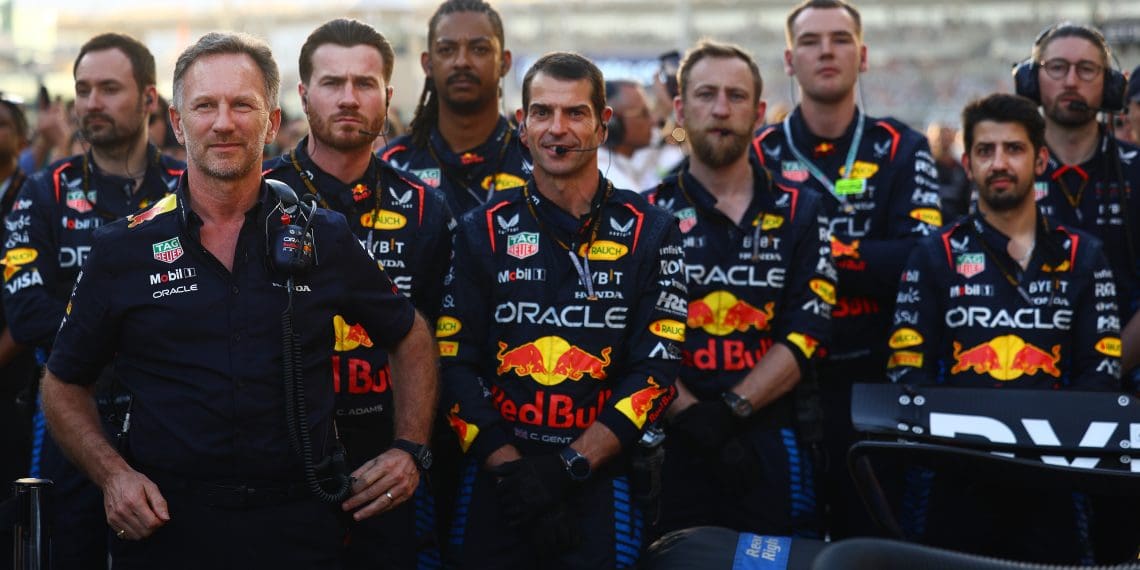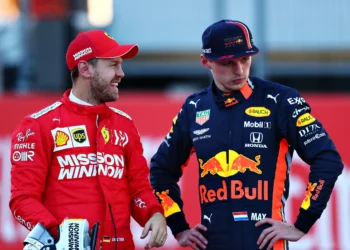Christian Horner isn’t sugarcoating it—Red Bull’s next challenge may be its biggest yet. As the reigning F1 powerhouse prepares to defend its dominance in 2024 and reclaim lost ground in 2025, the looming 2026 regulation overhaul presents a whole new battle. And this time, Red Bull isn’t just designing a car—it’s building an engine from scratch.
For the first time in its history, Red Bull is developing an in-house Formula 1 power unit, stepping into the lion’s den of engine manufacturers alongside Ferrari, Mercedes, and Renault. And they won’t be alone—Ford is back in F1, ending a two-decade absence, ready to shape the future of Red Bull Powertrains.
Red Bull’s Gamble: Can It Win Without Honda?
The decision to build its own powertrain facility was triggered by Honda’s planned departure from F1 after 2021, leaving Red Bull without an engine supplier. But rather than scramble for a replacement, Red Bull went all-in on self-sufficiency, establishing Red Bull Powertrains at its Milton Keynes headquarters.
However, Red Bull isn’t flying solo in this high-stakes gamble. The team has struck a pivotal partnership with Ford, which will co-develop the 50/50 hybrid power unit required under the 2026 regulations.
Horner knows the challenge ahead is monumental, but insists Red Bull isn’t underestimating the task.
“It is a hugely exciting time for the team, and while the prospect of building our own engine is an undertaking that cannot be underestimated, our partnership with Ford is a pivotal one in the overall project,” Horner stated at a recent Ford event.
The reality? Beating Ferrari and Mercedes at their own game won’t be easy. While Red Bull has mastered aerodynamics and chassis design, engine development is an entirely different beast—one that teams like Ferrari and Mercedes have spent decades perfecting.
Why Ford’s Return to F1 Is a Game-Changer
Ford’s comeback isn’t just a historical footnote—it’s a statement of intent. The automotive giant last participated in Formula 1 in 2004, when it owned Jaguar Racing before selling the team to Red Bull. Now, two decades later, Ford is re-entering the sport as a powertrain partner, using Red Bull as its gateway to the pinnacle of motorsport innovation.
“Formula 1 is our chance to showcase Ford technologies on a global stage to a whole new audience, generating excitement for the iconic Ford brand all around the world,” Ford CEO Jim Farley said.
For Ford, this partnership isn’t just about building an engine—it’s about redefining its global motorsport presence. And with Red Bull’s six Constructors’ Championships and eight Drivers’ titles, there’s no better team to lead the charge.
The 2026 Battle: Red Bull vs. the Established Giants
Red Bull and Ford may be the new kids on the powertrain block, but their ambitions are sky-high. With 2026 ushering in new engine regulations that emphasize hybrid efficiency, all manufacturers will be starting from scratch.
For Horner and Red Bull, the goal isn’t just to build a competitive engine—it’s to win titles with it.
That means outpacing Ferrari’s legendary power units, outsmarting Mercedes’ hybrid expertise, and outperforming Renault’s deep-rooted F1 engineering.
Can Red Bull pull off this audacious move and remain at the top of Formula 1?
If they do, the 2026 season won’t just be a new era—it’ll be a Red Bull revolution.










